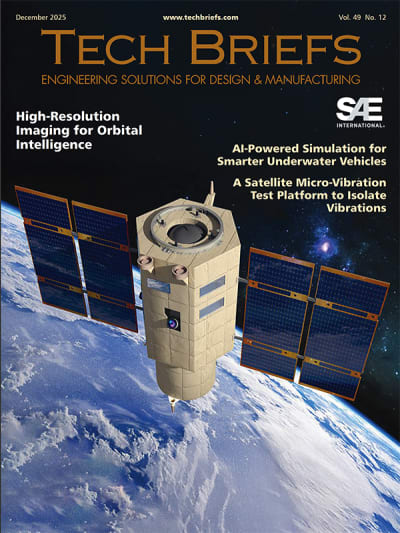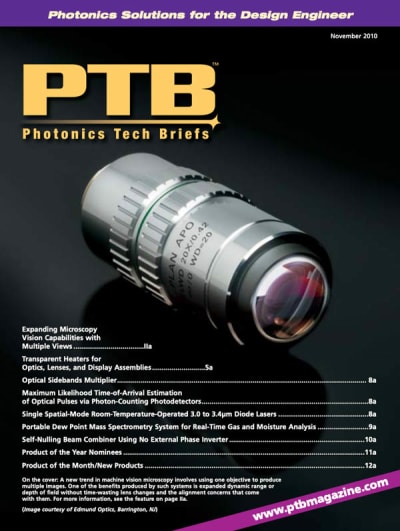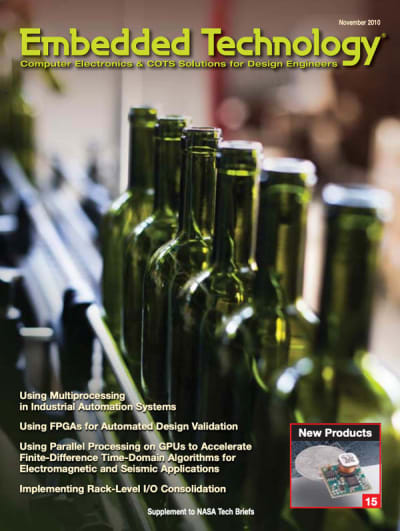Inside this issue
Overview
The November 2010 issue of NASA Tech Briefs features a diverse array of articles and innovations that highlight advancements in technology and engineering. This edition is particularly notable for its focus on the intersection of design, automation, and photonics, showcasing the latest trends and developments in these fields.
Special Awards Section: Create the Future Design Contest Winners The issue opens with a special section dedicated to the winners of the Create the Future Design Contest. This contest encourages engineers and students to develop innovative products that can improve the quality of life and address pressing global challenges. The winning designs exemplify creativity and practicality, showcasing solutions in various sectors, including healthcare, energy, and consumer products.
Industry Update: Analysis & Simulation Software The magazine provides an industry update that discusses the latest trends in analysis and simulation software. This segment emphasizes the importance of simulation tools in the design process, allowing engineers to test and validate their ideas before physical prototypes are created. The article highlights how these tools can enhance productivity, reduce costs, and accelerate time-to-market for new products.
Handheld Optical Window Inspection Device One of the featured innovations is a handheld optical window inspection device. This device is designed for quick and efficient inspection of optical components, ensuring they meet quality standards. The article details the technology behind the device, its applications in various industries, and how it can streamline the inspection process, ultimately improving product reliability.
Photonics Tech Briefs The issue includes a section dedicated to photonics, which explores the use of light in technology. Articles cover a range of topics, including advancements in optical systems, photonics solutions for design engineers, and the latest research in the field. Notable highlights include discussions on transparent heaters for optics and lenses, which can enhance performance in various applications, and the development of optical sidebands multipliers, which have implications for telecommunications and signal processing.
Expanding Microscopy Vision Capabilities A significant feature in this issue is the exploration of new trends in microscopy. The article discusses how advancements in machine vision microscopy are enabling the use of a single objective to produce multiple images. This innovation expands dynamic range and depth of field, reducing the need for time-consuming lens changes and improving overall efficiency in imaging processes. The implications of this technology are vast, impacting fields such as biomedical research, materials science, and quality control.
New Products and Technologies The magazine also highlights several new products and technologies that are making waves in the industry. These include systems that utilize multiprocessing in industrial automation, FPGA (Field-Programmable Gate Array) applications for automated design validation, and the use of parallel processing on GPUs (Graphics Processing Units) to accelerate finite-difference time-domain algorithms for electromagnetic and seismic applications. Each of these innovations represents a step forward in their respective fields, showcasing the ongoing evolution of technology.
Implementing Rack-Level I/O Consolidation Another key topic covered is the implementation of rack-level I/O consolidation. This approach aims to streamline data management and improve system efficiency in data centers and industrial settings. The article discusses the benefits of consolidating input/output operations at the rack level, including reduced complexity, lower costs, and enhanced performance.
Conclusion Overall, the November 2010 issue of NASA Tech Briefs serves as a comprehensive resource for engineers, designers, and technology enthusiasts. It not only showcases cutting-edge innovations and products but also provides insights into the latest trends and challenges facing the industry. The combination of practical applications, theoretical advancements, and real-world solutions makes this issue a valuable addition to the ongoing conversation about the future of technology and engineering.
Readers are encouraged to explore the articles in detail, as they offer a wealth of information and inspiration for those looking to stay at the forefront of technological advancements. Whether you are an engineer, a student, or simply a technology enthusiast, this issue promises to deliver valuable insights and innovative ideas that can spark creativity and drive progress in various fields.
Features
-
Eye on Innovation
-
Application Briefs
Displacement Sensors to Monitor Valve Health and Prevent Rocket Engine Test Failures
-
Articles
Industry Update: Analysis & Simulation Software
2010 Create the Future Design Contest
2010 Create the Future Design Contest Grand Prize Winner
2010 Create the Future Design Contest Consumer Products Category Winner
2010 Create the Future Design Contest Machinery and Equipment Category Winner
2010 Create the Future Design Contest Medical Category Winner
2010 Create the Future Design Contest Safety and Security Category Winner
2010 Create the Future Design Contest Transportation Category Winner
Tech Briefs
-
Physical Sciences
Portable Handheld Optical Window Inspection Device
Speech Acquisition and Automatic Speech Recognition for Integrated Spacesuit Audio Systems
Analysis of Nozzle Jet Plume Effects on Sonic Boom Signature
Handheld White Light Interferometer for Measuring Defect Depth in Windows
-
Manufacturing & Prototyping
Microfabricated Segmented-Involute-Foil Regenerator for Stirling Engines
Reducing Seal Adhesion in Low Impact Docking Systems
Corrosion-Resistant Container for Molten-Material Processing
Process To Produce Iron Nanoparticle Lunar Dust Simulant Composite
-
Materials
Fabrication of Lanthanum Telluride 14-1-11 Zintl High-Temperature Thermoelectric Couple
-
Information Sciences
Predicting Long-Range Traversability From Short-Range Stereo-Derived Geometry
Salience Assignment for Multiple-Instance Data and Its Application to Crop Yield Prediction
Browser-Based Application for Telemetry Monitoring of Robotic Assets
Decomposition Algorithm for Global Reachability on a Time-Varying Graph
Autonomous GN&C for Spacecraft Exploration of Comets and Asteroids
Efficient Web Services Policy Combination
Using CTX Image Features to Predict HiRISE-Equivalent Rock Density
Inversion Method for Early Detection of ARES-1 Case Breach Failure
Evaluating Descent and Ascent Trajectories Near Non-Spherical Bodies
-
Mechanics & Machinery
Reusable Hot-Wire Cable Cutter
High-Volume Airborne Fluids Handling Technologies To Fight Wildfires
-
Electronics & Computers
Methods of Using a Magnetic Field Response Sensor Within Closed, Electrically Conductive Containers
Products
-
Briefs
Maximum Likelihood Time-of-Arrival Estimation of Optical Pulses via Photon-Counting Photodetectors
Single Spatial-Mode Room-Temperature-Operated 3.0 to 3.4 μm Diode Lasers
Portable Dew Point Mass Spectrometry System for Real-Time Gas and Moisture Analysis
-
Applications
-
Articles
Dimming LEDs, Without the Flicker
Enhanced Protection for LEDs: Parylene Offers a Clear View into the Future
-
Research News





